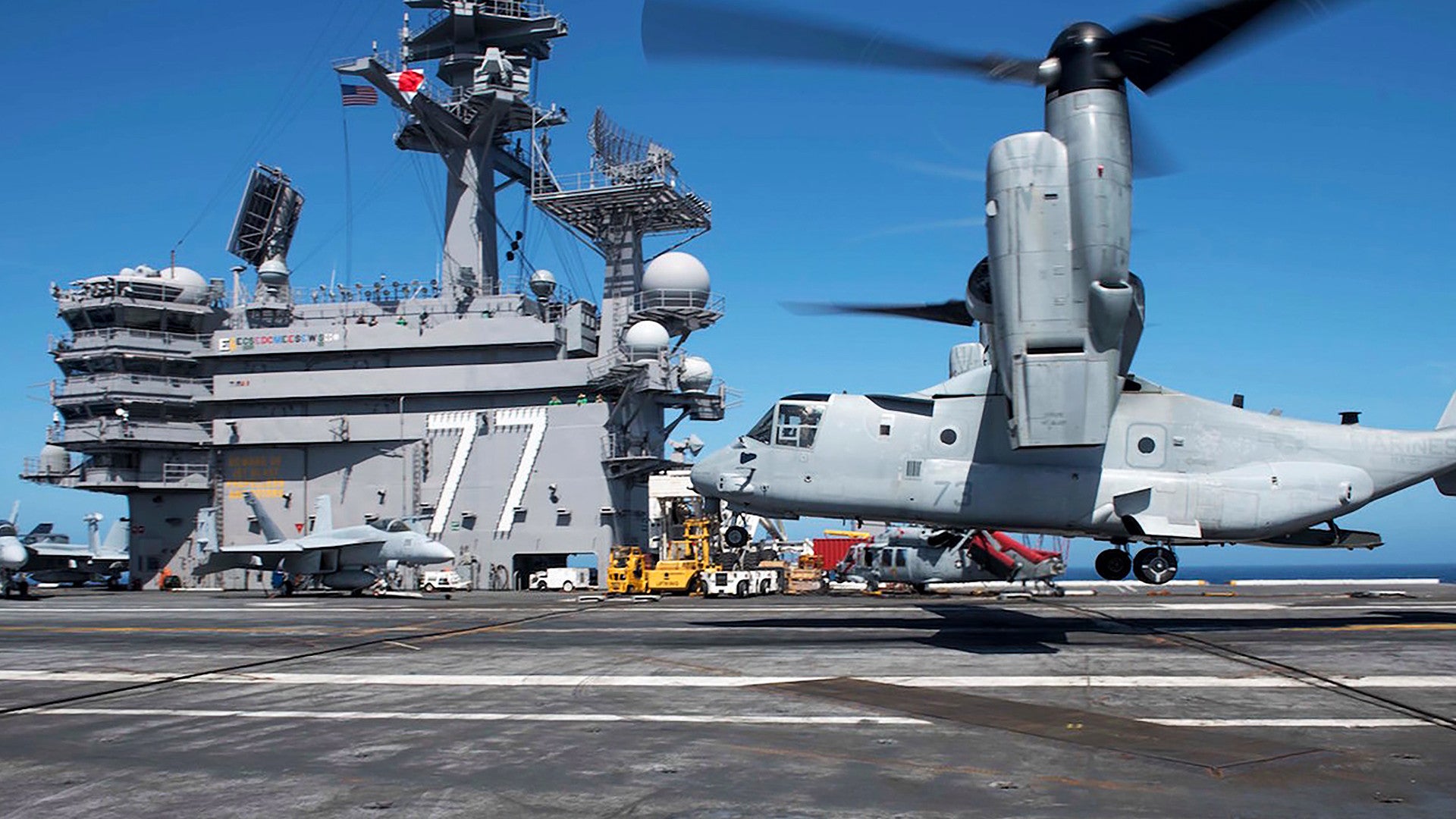The U.S. Navy says it will formally establish the first of three CMV-22B Osprey squadrons within weeks and has outlined other details about how it plans to proceed with the replacement of its existing C-2A Greyhound carrier onboard delivery aircraft.
The announcement comes after the service recently demonstrated the ability of the tilt-rotors to use rolling landings and takeoffs to touch-down on an aircraft carrier’s deck and then get airborne again with large cargoes, which will be an essential capability when it comes to transporting particularly large items, such as spare F135 engines for the F-35C Joint Strike Fighter.
Fleet Logistics Multi-Mission Squadron Three Zero (VRM-30) will stand up at Naval Air Station North Island in California, on Oct. 1, 2018, according to an official directive, Seapower Magazine reported on Aug. 15, 2018. On that same date, the Naval Aviation Training Support Group (NATSG) will take up residence at Marine Corps Air Station New River in North Carolina, to coordinate CMV-22B pilot training, which Marine Medium Tiltrotor Training Squadron Two Zero Four (VMMT-204) will oversee initially.
Sometime after that, the Navy plans to create a new wing-sized unit at North Island to control both VRM-30 and a second operational CMV-22B squadron, VRM-40. A third dedicated “fleet replacement” training squadron, VRM-50, will eventually arrive at the base in California, consolidating the Navy’s entire Osprey operations at one location.
This plan was one of two proposed courses of action the Navy revealed in January 2018 and the service expects it to cost approximately $130 million to upgrade North Island to handle the influx of aircraft and personnel. At present, the goal is for CMV-22B to reach initial operational capability by 2020, the tilt-rotor fleet to be fully operational four years after that, and for the C-2s to be completely out of service by 2026.

With this in mind, Naval Air Systems Command continues to evaluate the Osprey’s capabilities in the carrier onboard delivery (COD) role using MV-22Bs, which the U.S. Marine Corps operates. The CMV-22B configuration is similar to the Marines’ Ospreys, but will also feature additional fuel capacity in the fuselage and wings to increase its overall range, additional communications equipment, a public address system in the main cabin, and extra lighting to help with loading and unloading cargo at night.
“I started off flying Greyhound carrier onboard delivery aircraft and I love the platform,” said U.S. Navy Lieutenant Commander Steven Tschanz, a test pilot from Air Test and Evaluation Squadron Two One (HX-21), said earlier in August 2018. “With that said, nothing lasts forever and the Navy came up with a solution to move us into the future with the CMV-22 Osprey.”
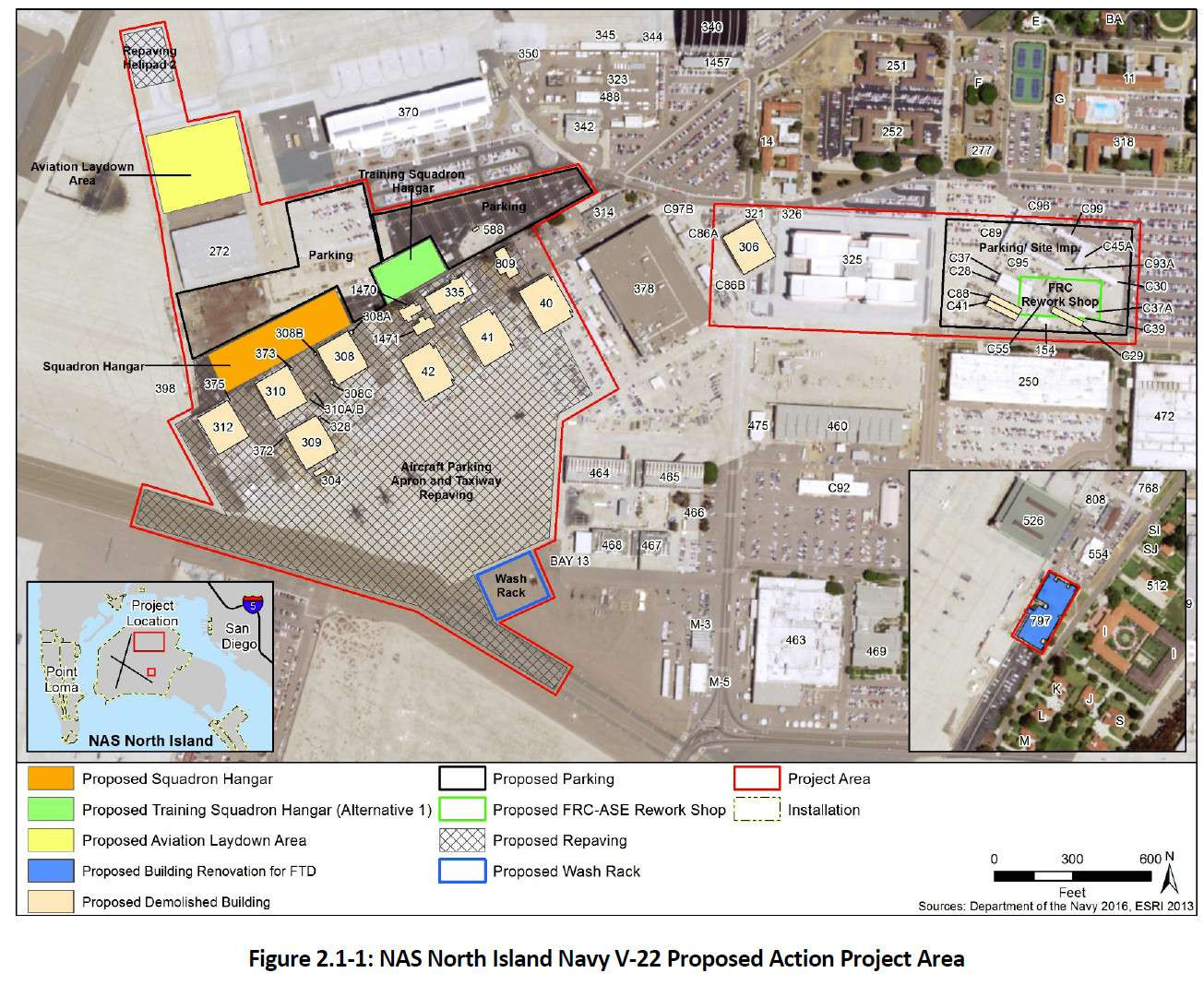
Tschanz was speaking after a series of tests aboard the Nimitz-class aircraft carrier USS George H.W. Bush that showed the MV-22B could safely land and takeoff with a gross weight of 57,000 pounds, including fuel and internal cargo. The Navy’s C-2s can’t touch down on one of the flattops if they’re heavier than 49,000 pounds.
The CMV-22 will also be able to carry heavy loads slung underneath and otherwise operate like a helicopter. This could eliminate the need for the present “hub and spoke” concept of operations where the COD aircraft brings cargo or personnel for the other ships in the Carrier Strike Group, but MH-60R or -S helicopters have to actually ferry them to those vessels.
But, in particular, the August 2018 experiments showed that the CMV-22 can meet one of the Navy’s key requirements for the aircraft in the COD role, which is transporting F135 engines for the F-35C Joint Strike Fighter. The Navy hopes to reach initial operational capability with these stealth fighter jets by the end of 2018, though there are fears that schedule may slip.
If all goes according to plan, the F-35Cs could see their first operational deployment aboard the USS Carl Vinson, another Nimitz-class carrier, in 2021. This could be the first cruise for the CMV-22Bs, too, since, at least according to the Navy, the C-2s can’t transport the F135s and therefore would be unable to adequately support a Carrier Air Wing that included Joint Strike Fighters.
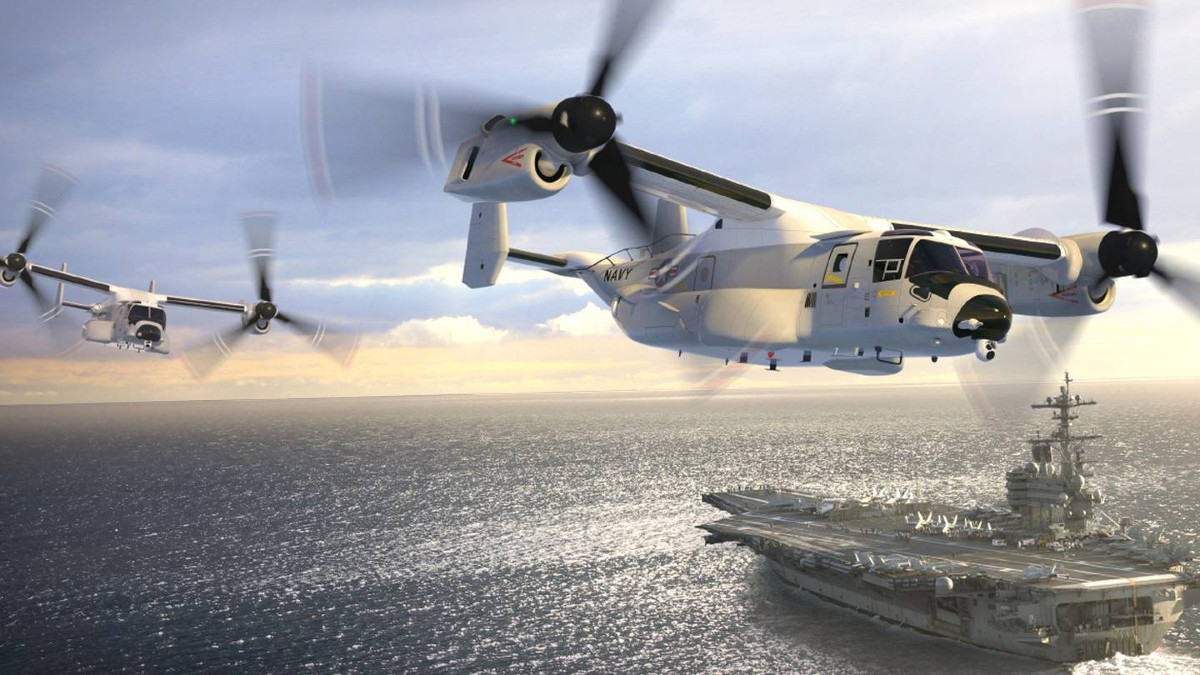
But while the Navy lauded the success of the tests, the event also highlighted a number of persistent concerns about the Osprey’s ability to handle the COD mission, much of which centers around the F135 engine issue. Hauling spare parts and entire replacement engines to the carrier is at the center of wartime COD duties and will be essential for keeping aircraft mission capable and sortie rates up during any potential high-end conflict.
The Navy is right to say that the C-2 can’t carry the F-35’s engine inside its standard shipping container, a bulky configuration that weighs 9,350 pounds. But the CMV-22B, despite its now proven ability to land and take off with a higher gross weight, can’t, either.
To get the F135 into the cramped confines of the Osprey’s main cabin, the Navy will need to use a special pallet that leaves the engine exposed to the elements, including corrosive salt-filled sea air and water. Ground crews will also need to remove certain external aircraft components to prevent them from being damaged during loading and unloading and then reinstall them before the tilt-rotor can get going again, which makes the entire process take longer. The Marine Corps uses this procedure to support its F-35B Joint Strike Fighters deployed on amphibious assault ships using its MV-22Bs.
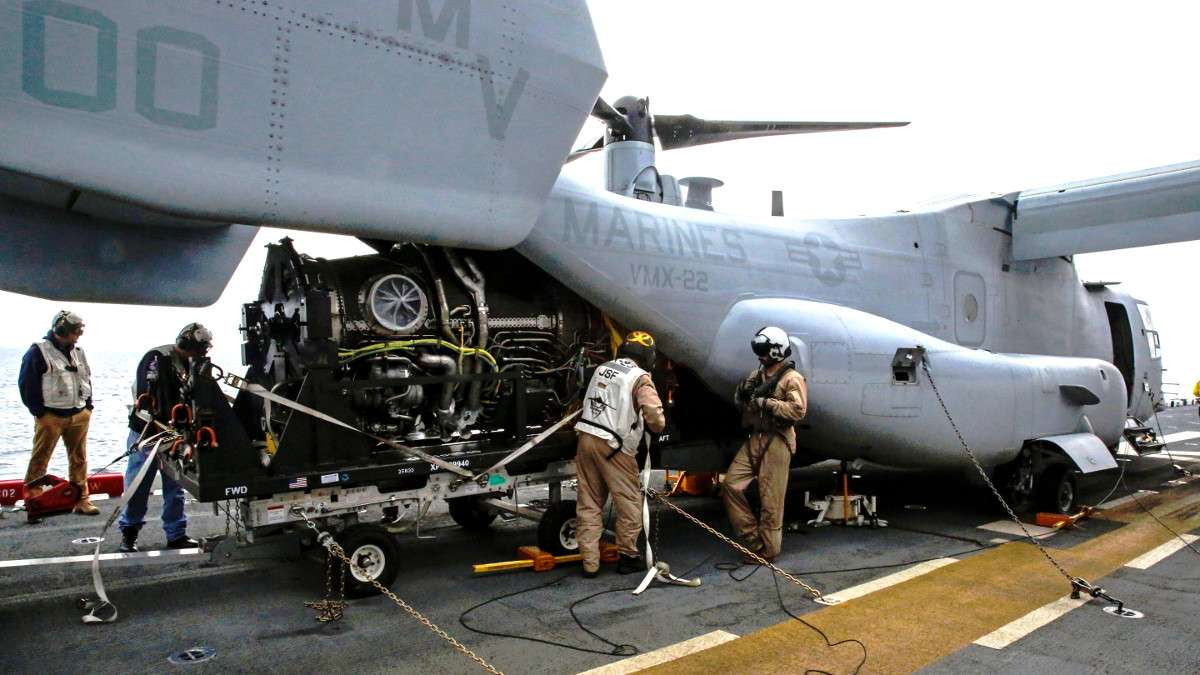
This adds to general concerns about the amount of deck space the CMV-22B will take up and whether that might impede other flight operations while taking on cargo or passengers or offloading them. The C-2 can taxi to a parking spot with its wings folded, giving it a far smaller overall footprint to help maneuver around the crowded flight deck. The Osprey cannot move around on its own with its wing and rotors folded.
If the aircraft needs to use a rolling landing or take off to get moving or come to a complete stop, this could only compound those issues. Video of the tests, seen at the beginning of the story, shows the MV-22B from HX-21 using a significant portion of Bush’s angled flight deck to perform these maneuvers, something that might be more difficult to facilitate during high-pace operations in the midst of a large-scale conflict.
This could also limit the ability of the carrier to use this portion of the deck for catapult launches or other activities, as well. Overall, this will impact how the carrier’s crew manages the deck during operations and the already complex launch and recovery cycle. The rolling landing may turn out to help a bit with fitting the CMV-22Bs into the pattern during landing operations, too.
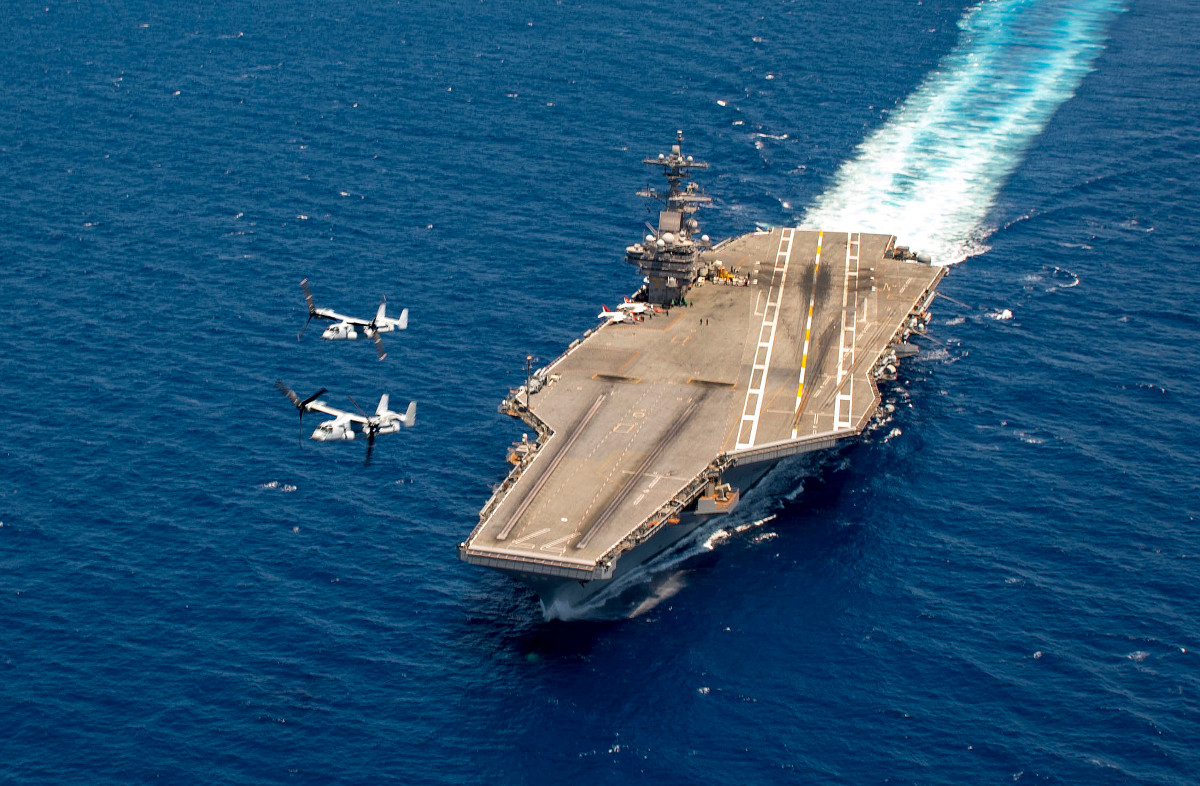
All of this is on top of other unrelated issues, which you can read about in more detail here. These including the Osprey’s lack of a pressurized cabin, limiting how high the tilt-rotor can fly and forcing it to fly around rather than over storms and other dangerous weather, which could increase the time it takes for the aircraft to cover the “golden mile” between bases ashore and the carrier. The only alternative would be to fly through bad weather, which is routine in the maritime environment, at comparatively low altitudes, which can make flights out to the boat very uncomfortable and in some cases hazardous. The CMV-22B will have a slower maximum speed than the C-2, as well.
Of course, exploring new capabilities and uncovering and developing ways to try to mitigate any issues is exactly why HX-21 is running Ospreys through various tests. So, it will be interesting to see how the Navy’s understanding of carrier operations evolve as it stands up its first CMV-22B squadron and continues to prepare the aircraft for their first operational deployment, which could come in just three years.
Contact the author: jtrevithickpr@gmail.com
